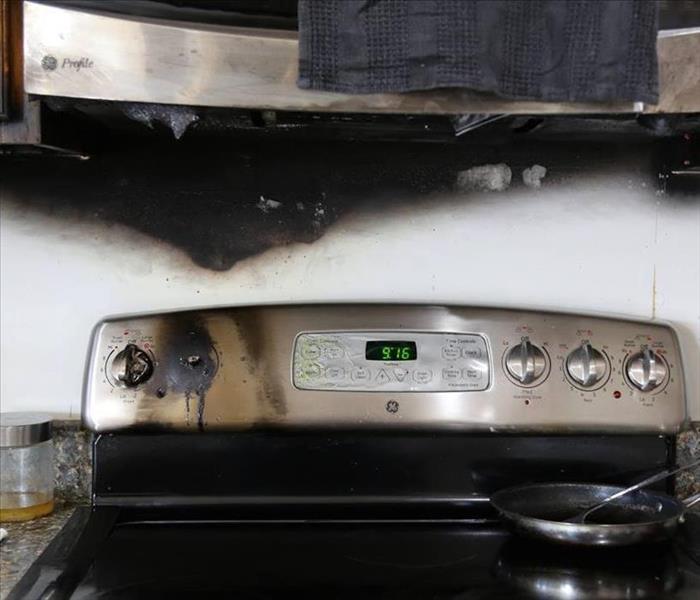How Soot Varies After a Fire
10/16/2020 (Permalink)
What is fire soot?
After a fire has blazed, fine black particles known as soot start to accumulate. When organic, carbon-filled materials burn, some of them do not burn completely. The incomplete burning of materials such as wood, plastic, coal, and oil results in the formation of soot.
During a fire, soot can spread throughout the whole property, attaching too many surfaces and leave a thin black layer of grime. Soot contains forms of acid, metals, soil, and dust. Not only is soot difficult to clean due to its stickiness, if not treated properly it can be destructive to furniture and the building structure. The most common types of soot residues that we encounter when restoring fire damage events are wet soot, dry soot, oily soot, and protein soot.
Types of Soot
Wet soot- This occurs when low heat fires are oxygen-starved. It has high moisture content and can be composed of plastics, rubbers, and oils. It has a very strong smell and can be smeared very easily.
Dry soot- This type of soot is very oxygen-rich which means it occurs when there is a very hot fire. It is composed of natural materials and causes more damage to surfaces than other kinds of soot. The smell is not as harsh as compared to other kinds of soot.
Oily soot- Comes from puff backs and is known to attach to every surface. A puff back is a small explosion inside the burner chamber of your furnace when there is excess fuel that ignites. This causes smoke and soot to shoot into your home. If your gas or oil furnace is not properly maintained, you may be at risk.
Protein soot- When cooking, protein soot can occur and is virtually invisible to the naked eye. Since it is difficult to see, the pungent smell can be a good sign that you have protein soot in your home.
Benefits of Mitigation
As fire restoration professionals, our goal is to mitigate damages and restore your home and contents to their original condition. We believe in restoring rather than replacing as much as possible. Our fire and soot cleaning technicians can help restore antiques, valuables, and many irreplaceable belongings. Some items can be cleaned in your home, while others may need to be brought to our office for more extensive cleaning. We also work with many local specialty restoration professionals that have extensive knowledge in restoring artwork and other sensitive items.
What to Do Before We Arrive
-Do not touch contaminated surfaces.
-Do not attempt to clean walls, carpets, contents, or other contaminated surfaces.
-Do not use affected appliances or electronics.
-Do not use food, cosmetics, or medications exposed to soot.
How We Can Help
When fire strikes, lives are turned upside down. Often, the hardest part for residents and business owners is knowing where to begin and who to contact.
After a fire has damaged your home or business, you do not have to struggle to clean up the affected areas. The professionals at SERVPRO of Greater Covington and Mandeville can assist you to restore your home back to preloss conditions. Our technicians have the specialized tools and expertise required to salvage as much as possible from the aftermath of a fire.






 24/7 Emergency Service
24/7 Emergency Service
